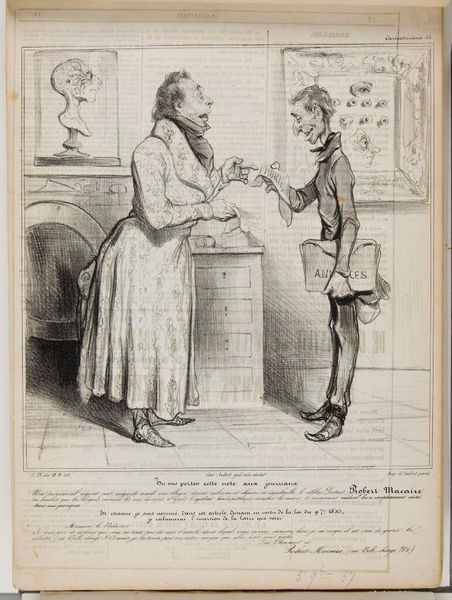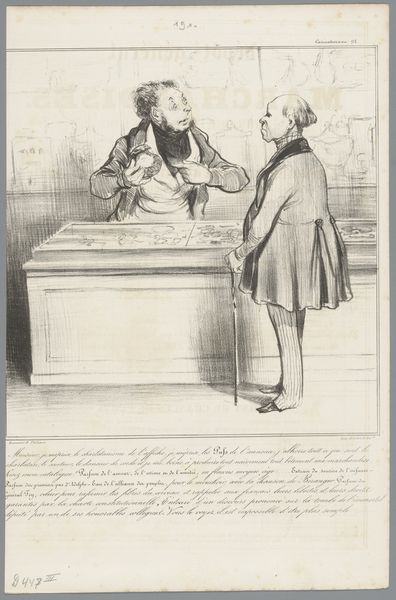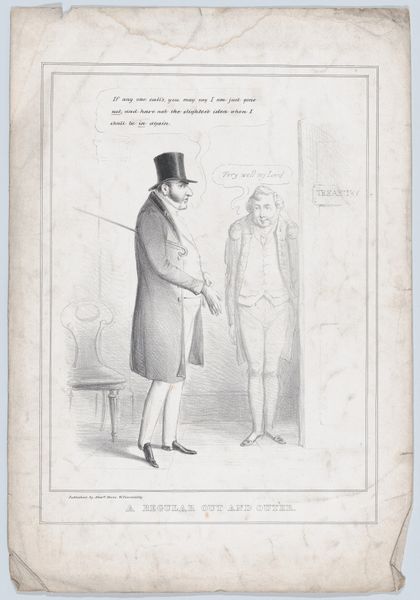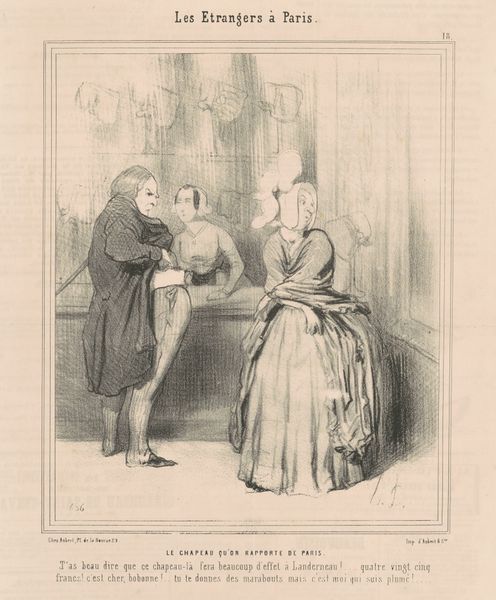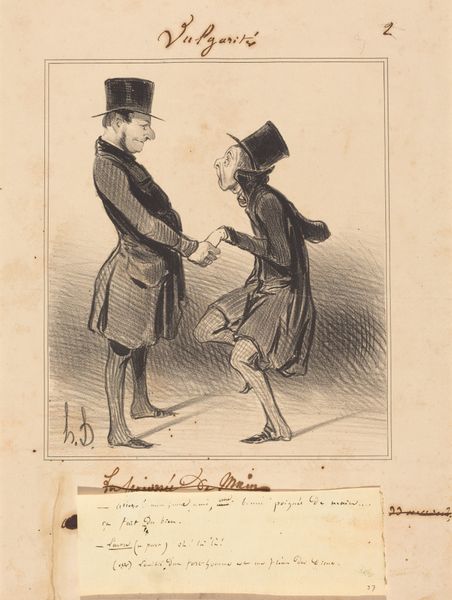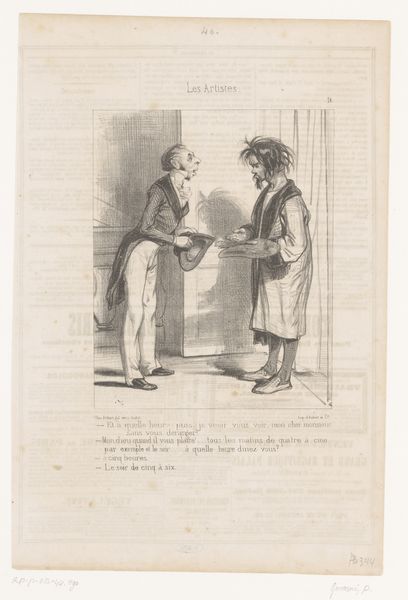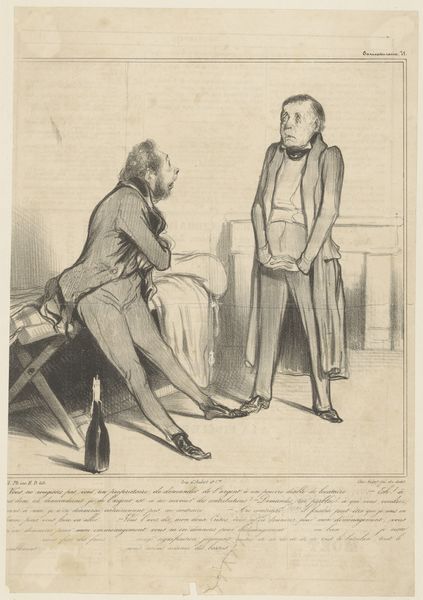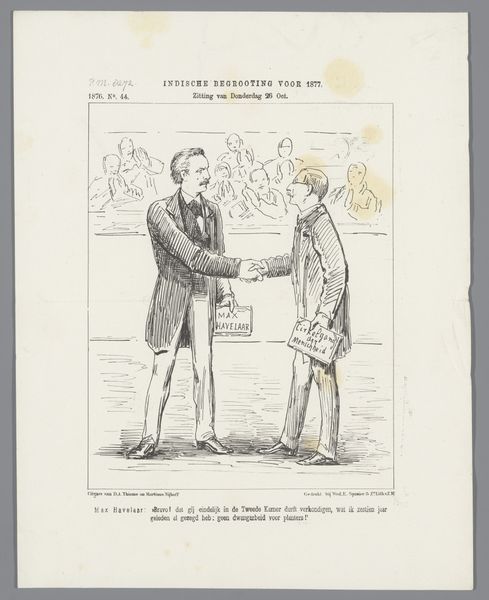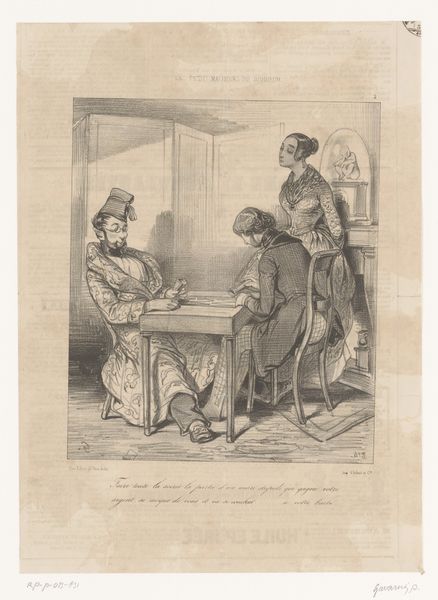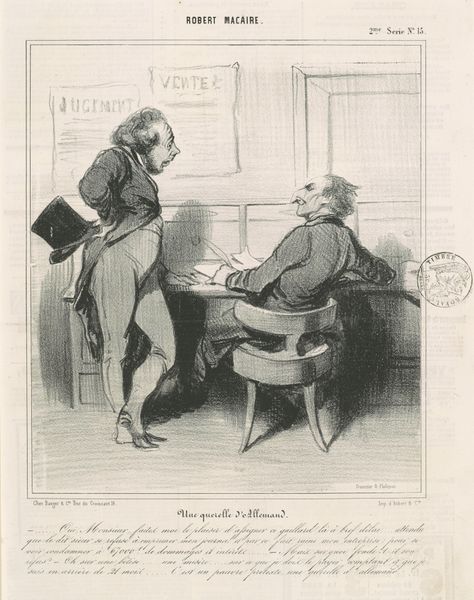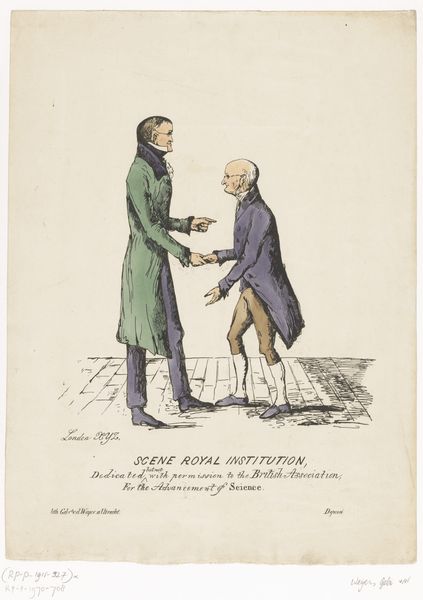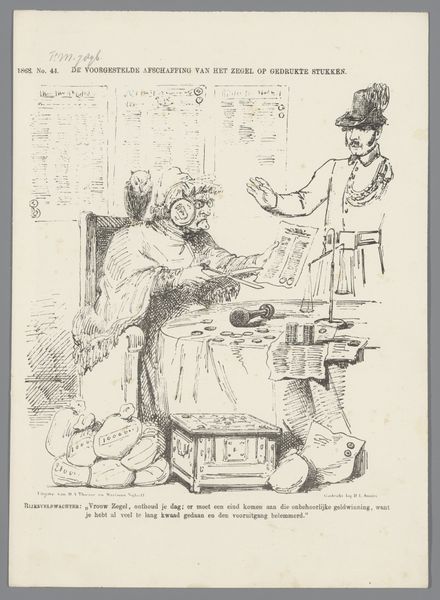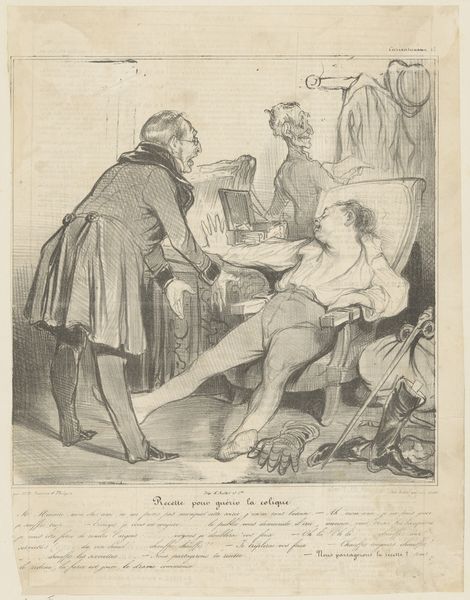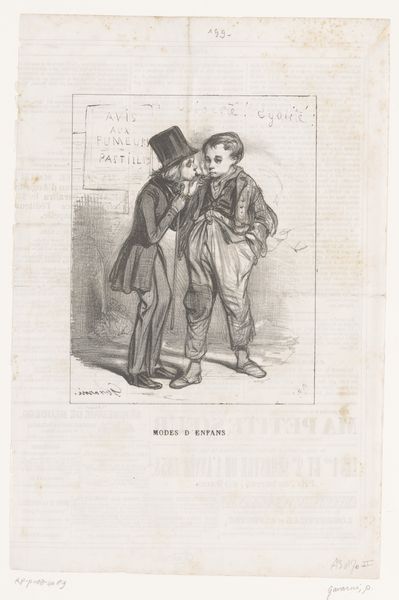
drawing, lithograph, pen
#
portrait
#
drawing
#
aged paper
#
toned paper
#
quirky sketch
#
lithograph
#
caricature
#
sketch book
#
traditional media
#
personal sketchbook
#
sketchwork
#
romanticism
#
sketchbook drawing
#
pen
#
genre-painting
#
storyboard and sketchbook work
#
sketchbook art
Dimensions: height 363 mm, width 238 mm
Copyright: Rijks Museum: Open Domain
Curator: The exaggeration is powerful, isn't it? I find this lithograph darkly funny, with a hint of something menacing lingering behind it all. Editor: That's "Dokter Robert Macaire geeft brief voor de pers aan Bertrand," or "Doctor Robert Macaire Giving a Letter for the Press to Bertrand." Honoré Daumier created it around 1837, and the Rijksmuseum now holds it. What is especially interesting here is not just the immediate laugh but also the period during which this print appeared. Curator: I can see that. Daumier seems interested in exploring visual systems. Behind the figures are framed displays of 'knowledge' - the flayed head and the arrangement of eyes evoke medical and even psychological visual cues used in diagnosing personality. Does that symbolism resonate with the social history you have in mind? Editor: Absolutely. Daumier’s caricature emerged in the early 1830s, and was part of an onslaught of criticism of the bourgeoisie’s self-serving, even parasitic rise to power during the July Monarchy. Doctor Macaire specifically was Daumier’s figure of unprincipled financial speculation, someone whose "medical" expertise serves only himself. Curator: Note also how both characters, through posture, convey greed or impatience. This predatory quality also hints that systems of patronage and influence are corrupted by greed at every level. Editor: Yes. These drawings initially gained popularity because people felt they revealed an uncomfortable truth about post-revolutionary France. And their biting quality eventually led to censorship that temporarily shut down Daumier’s periodical, *La Caricature*. It's an instance when art directly intersected with censorship. Curator: The figures stand on either side of a chasm of greed and mistrust – and, as always, this cultural artifact carries echoes of now familiar contemporary stories of social elites operating in ways that prioritize self-preservation above everything. It serves as a cautionary sign, I think. Editor: Precisely. It's crucial to remember that satirical images like these played a crucial role in fostering public opinion, shaping resistance against perceived social injustices. A lot of art did back then, in other words. Curator: A point well-taken: there is more than just artistry on display; social commentary shapes it too. Editor: It reminds us of the profound links between social criticism, graphic satire, and the power of art in shaping our social conscience.
Comments
No comments
Be the first to comment and join the conversation on the ultimate creative platform.
